Christine Valters Paintner's Blog, page 140
January 12, 2015
The Call to Obedience (a love note from your online Abbess)
To receive this love note straight to your in-box, subscribe here (and also receive gifts!)
Dearest dancing monks,
 Just before Christmas our local dog rescue group was looking for two-week foster homes to help give them a bit more space while the dog pounds close and a rush of new dogs came into their kennels. We have been longing for a dog again, so relished the opportunity to help the shelter out while also soaking in some canine love. We brought home Ginger Nut, an older terrier, sweet and snuggly as can be. She was a perfect companion over the Christmas season. But, much to my surprise, over that time with her we actually discerned this isn't the right season for us to have a dog in our lives. With still much travel ahead, wonderful groups to be present with, and our apartment not being very well set up to take a dog out especially for middle of the night needs, we realized having a dog was not a wise choice right now.
Just before Christmas our local dog rescue group was looking for two-week foster homes to help give them a bit more space while the dog pounds close and a rush of new dogs came into their kennels. We have been longing for a dog again, so relished the opportunity to help the shelter out while also soaking in some canine love. We brought home Ginger Nut, an older terrier, sweet and snuggly as can be. She was a perfect companion over the Christmas season. But, much to my surprise, over that time with her we actually discerned this isn't the right season for us to have a dog in our lives. With still much travel ahead, wonderful groups to be present with, and our apartment not being very well set up to take a dog out especially for middle of the night needs, we realized having a dog was not a wise choice right now.
I was actually quite heartbroken to come to this realization, especially since Ginger had worked her way into my heart. I sent the rescue folks some much better and more flattering photos of her to post in the hopes of finding her a perfect forever home. Someone saw those photos posted on Facebook who knew to whom she belonged! With all my prayers for her to find a loving place to land, what happened was even better than I had imagined. She was reunited with her guardians and went home again (and it turns out her name is Benji and she is 13, although she will always be Ginger to me).
I felt truly overjoyed by this turn of events and grateful that I had honored the truth of my own discernment, as much as I didn't want it to be true. Because Ginger was never meant to be ours, she was a passing guest along the way to whom we could offer some hospitality. And in return she broke my heart open in new ways, she reminded me just how much love I have to offer. The word "Visitation" keeps rising up for me when I consider her presence with us during this most holy of seasons. She came, offered her blessing, and then returned home again.
I still feel a bit stunned by it all and how much grace worked through this situation. This isn't the first time in the last few months where I have had an experience like this. But this is what happens when we start to pay attention to our lives and do the hard work of listening and responding. In the Benedictine tradition, one of the central vows is obedience. On one level it means obedience to an Abbot or Abbess, but on a deeper level it means to follow the call of your heart, no matter how demanding or difficult. I am so grateful for friends who supported my tender heart in the couple of days when I had to let go and before I knew how things would unfold. Having a community of support, who can help us honor our discernment, who know us well enough to be able to see if the call rings true to what they know of us, is so vital on this way.
All the dogs I have had the privilege of caring for, whether two weeks or nine years, have been anam caras for me, soul friends in the Irish language. Ginger reminded me of my own deep need to make this an even more intentional part of my life. At some point again, we will be able to welcome in another canine companion. For now, I am being called to continue rooting into this wonderful place we live and make time to be out in the beauty of the landscape and let creation stir my heart to new awareness. My word for the year, dwell, continues to offer new invitations.
Have there been any Visitations in your own life? What is the call asking that you follow no matter how challenging? How might you practice obedience in response?
If you would like to explore this process of tending to the Soul's Slow Ripening and listening for the voice of discernment inspired by monastic wisdom, please join us for an online retreat this Lent, starting February 16th.
With great and growing love,
Christine
Christine Valters Paintner, PhD, REACE
www.AbbeyoftheArts.com
Photo right: Ginger of the soulful eyes
January 10, 2015
Invitation to Photography: Hospitality – What will you welcome in?
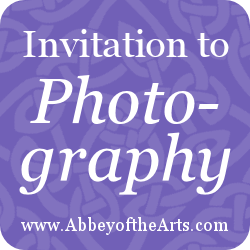 Welcome to this month's Abbey Photo Party!
Welcome to this month's Abbey Photo Party!
I select a theme and invite you to respond with images.
We began this month with a Community Visio Divina practice with our reflection on Hospitality with an image of a threshold, asking what you want to welcome in this year. If you have chosen a word for the year ahead, what qualities does it ask you to invite in?
I invite you for this month's Photo Party to hold this image in your heart as you go out in the world to receive your own images in response. As you walk be ready to see what is revealed to you as a visual expression of your prayer.
You can share images you already have which illuminate the theme, but I encourage you also to go for a walk with the theme in mind and see what you discover.
You are also welcome to post photos of any other art you create inspired by the theme. See what stirs your imagination!
How to participate:
You can post your photo either in the comment section below* (there is now an option to upload a file with your comment – your file size must be smaller than 1MB – you can re-size your image for free here – choose the "small size" option and a maximum width of 500).
You can also join our Holy Disorder of Dancing Monks Facebook group and post there. Feel free to share a few words about the process of receiving this image and how it speaks of the harvest for you.
*Note: If this is your first time posting, or includes a link, your comment will need to be moderated before it appears. This is to prevent spam and should be approved within 24 hours.
January 7, 2015
Monk in the World guest post: Bryan Berghoef
I am delighted to share another beautiful submission for the Monk in the World guest post series from the community. Read on for Bryan Berghoef's wisdom on finding your inner monk outside the boxes of your calendar:
Letting Go of the Schedule
“A good traveler has no fixed plans, and is not intent on arriving.”
~Lao-Tzu
My usual mode of operation involves a certain amount of busyness. True for all of us, no doubt! We have a schedule. Appointments to keep. A certain amount of anxiousness occurs as we drive to the meeting or hop on the subway to arrive on time. Preferably we’ll be a bit early, but from time to time we experience the proverbial “last-minute distraction,” which means running late. On those days, we tap our foot anxiously, waiting for the bus to arrive. We put the pedal to the metal in the car, perhaps running a light or two. In our brisk, determined-to-be-on-time walk, we brush past someone slightly rudely and distractedly to make the meeting.
Currently I frequently work in my home office. One of my three boys will often pop their head in the doorway: “Dad, can we play a game?” “Dad, can we play catch?” “Dad, help me build a fort.” I hear them, distantly. I’m absorbed in my work. Have to get these emails out. That report is due tomorrow. “Not now, son. I’m busy. Daddy has to get some important things done.”
At dinner, I sit for enough time to scarf down the meal my wife lovingly prepared. I quickly wash it down with some water. Eating is done, what’s next on the schedule? I have a meeting to get to tonight. Surely they understand that. Tomorrow there’ll be time to chat. Tomorrow there’ll be enough time to be present. To look my children in the eyes. To ask what they’re up to. Always tomorrow.
At some point, all this rushing around, all this clock-watching, all this schedule-keeping becomes too much. I realize something is amiss. When I want to be a monk in the world, the first thing I need to do is let go of the schedule. Stop being uptight about deadlines. Stop worrying about what time it is. Not every email deserves an immediate response. Not every meeting requires my presence. Not every bump or beep on my phone should pull me away from those I am with right now. The world does not revolve around me.
When I let go of the schedule, I begin to be present. I slow down. I breathe. My pulse slows. I set the table intentionally, grateful for each person this plate represents. I serve the meal with care, and take each bite and savor it. I look around and smile. I have nowhere to go but here. No one to distract me but those here now.
When I let go of the schedule, I can even enjoy work more contemplatively. I can see my commute as a gift – a chance to drive or walk more slowly. To be aware of those sitting next to me on the bus or the train. To be open to an engagement with someone new, rather than feel them as a nuisance. To see something from my boss’s perspective, or talk with a coworker. I seek to be a peaceful presence there as well.
When I let go of the schedule, I take time to go for walks. If in the city, I notice the storefronts, and wonder about the persons involved in each establishment. I notice a mother and child walking by, wondering about their day, their situation, their life. They become an object of love and compassion, not an obstacle in my hurry to arrive. If walking in the country, I go slowly, and savor each tree or flower I pass. I pause to notice what is happening around me. I sit quietly in the shade. I listen to the sounds. A few birds. A cricket. A frog. When I let go of the schedule, I take time for what nourishes me. I read a book for fun. I give attention to a hobby that brings me delight. I smile more. I am patient. When I remember that each moment is pregnant with divine presence, I can exhale, and just be.
Lao-Tzu, the philosopher and poet of ancient China, put it this way: “Be content with what you have; rejoice in the way things are. When you realize there is nothing lacking, the whole world belongs to you.” In another place, he adds this: “In family life, be completely present.”
I am a contemplative-in-training. And one of the most basic steps on this journey is also one I struggle with daily: let go of the schedule. Be present. Breathe. Smile. Drink in the fullness of the gift of each moment.
“Dad, can we play catch?”
“Absolutely, son. Absolutely.”
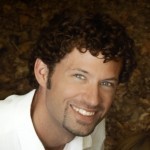 Bryan Berghoef is a pastor and the author of Pub Theology: Beer, Conversation, and God. He works for the Shalem Institute for Spiritual Formation, a non-profit teaching contemplative practice and leadership in Washington, D.C. Bryan is married to the author Christine Berghoef, and has four children. They have recently relocated to a flower farm in Holland, Michigan. (Photo by Christy Berghoef)
Bryan Berghoef is a pastor and the author of Pub Theology: Beer, Conversation, and God. He works for the Shalem Institute for Spiritual Formation, a non-profit teaching contemplative practice and leadership in Washington, D.C. Bryan is married to the author Christine Berghoef, and has four children. They have recently relocated to a flower farm in Holland, Michigan. (Photo by Christy Berghoef)
Click here to read all the guest posts in the Monk in the World series>>
Winners of the 2015 Give Me a Word Drawing!
It is truly amazing and inspiring to read through the words that have chosen you, our dear dancing monks, to guide and challenge for the year ahead. You can read them in the comments here. (And if you still need support for finding a word, the free 12-day mini-retreat is still available at this link).
I am delighted to announce the winners of our random drawing for a whole host of wonderful prizes. To claim your prize, please email us and we will get you set up.
One space in the upcoming online Abbey retreat Illuminating the Way: Epiphany and New Year Retreat with Monks, Mystics, & Archetypes (a fabulous way to begin the year!): Jan / acceptance
A copy of Dana Reynolds' fabulous gold medal winning novel Ink and Honey: Caroline / grace
A 6-week self study course from Dana Reynolds: Your Sacred Life Artisan's Book of Wonderment: Marianne /Ripening
A New Year Sacred Reading from the Ronna Detrick (let a woman from scripture accompany you into the new year!): Sharon Blessum – Receive
A copy Betsey Beckman's fabulous dance of The Creation on DVD (be inspired to dance into the new year): Kara Markell – With
A copy of As I Lay Pondering from Kayce Hughlett (a wonderful book of daily reflections to accompany you into the new year): Patty / Gratitude
A 2015 calendar from Stacy Wills featuring her alcohol ink paintings (be blessed with Stacy's stunning images each month): Lesley / Uplift
A one-month Lunar Ritual Tea membership (with two teas and meditation) from Tonja Reichley to move into the new year with prayerful intention: Rebecca Blackwell / Belong
A set of the Way of Brighid oracle cards from Tonja Reichley (choose a card each day to be inspired by Brighid's wisdom as both goddess and Saint): Seamus O’Reilly / Stillness
A copy of Richard Bruxvoort Colligan's new album Love Stands With, with songs based on justice-oriented Psalms (be moved by powerful music to inspire your heart to prophetic action in the coming year): Kathy Plourde / Focus
4 people will win a copy of Sick and You Cared for Me: Homilies and Reflections for Cycle B with one reflection by Christine, plus also Richard Rohr, Rob Bell, Jan Richardson, and many more: Lynne / Choose, Ardis / Behold, Marianne / Star, Laura Ellen / Truth-and-beauty-have-kissed-each-other
4 people will win their choice ofself-study online classes from the following: Creative Flourishing in the Heart of the Desert: A Self-Study Online Retreat with St. Hildegard of Bingen, Soul of a Pilgrim: An Online Art Retreat, Seasons of the Soul, Lectio Divina: The Sacred Art of Reading the World, or Eyes of the Heart: Photography as a Contemplative Practice.: Bridget / Ripen, Yael / Whole, Kate / Choice, Asther / Breakthrough
And finally, I created a word cloud from the words submitted. If for some reason your word doesn't appear in the text of the words, please trust that it is present in the spaces between. The more often a word was shared, the larger it appears. Please feel free to print a copy if you so desire, the word cloud belongs to all of us.
January 6, 2015
Call for Submissions: Monk in the World Guest Post Series
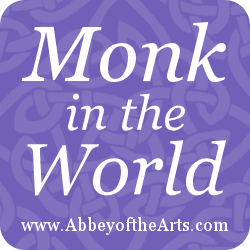 We welcome you to submit your reflection for possible publication in our Monk in the World guest post series. It is a gift to read how ordinary people are living lives of depth and meaning in the midst of the challenges of real life.
We welcome you to submit your reflection for possible publication in our Monk in the World guest post series. It is a gift to read how ordinary people are living lives of depth and meaning in the midst of the challenges of real life.
There are so many talented writers and artists in this Abbey community, so this is a chance to share your perspective. The reflection will be included in our weekly newsletter which goes out to more than 9000 subscribers.
Please follow these instructions carefully:
Details:
Please click this link to read a selection of the posts and get a feel for the tone and quality.
Submit your own post of 750-1000 words on the general theme of "How do I live as a monk in the world? How do I bring contemplative presence to my work and/or family?" It works best if you focus your reflection on one aspect of your life or a practice you have, or you might reflect on how someone from the monastic tradition has inspired you. We invite reflections on the practice of living contemplatively.
Please include a head shot and brief bio (50 words max). You are welcome to include 1-2 additional images if they help to illustrate your reflection in meaningful ways. All images should be your own. Please make sure the file size of each the images is smaller than 1MB. You can resize your image for free here – choose the "small size" option and a maximum width of 500).
We will be accepting submissions between now and February 15th for publication sometime in the spring/summer of 2015. We reserve the right to make edits to the content as needed (or to request you to make edits) and submitting your reflection does not guarantee publication on the Abbey blog, but we will do our best to include as many of you as possible.
Email Christine by February 15th with your submission and include the reflection pasted into the body of your email and attach your photo(s).
We will be back in touch with you by the end of February to let you know if edits are needed and/or when we have scheduled your post to appear.
January 5, 2015
"Dwell" (a love note from your online Abbess)
Dearest dancing monks,
 I have been sitting and listening for my own word. It arrived first about a week or so ago. I have been blessed to have some quiet time over the holidays to reflect on the inner and outer movements of this past year. Reflecting on the significant shifts for me over the last year helped to open the door for where I am being invited to focus my love and attention for the year to come.
I have been sitting and listening for my own word. It arrived first about a week or so ago. I have been blessed to have some quiet time over the holidays to reflect on the inner and outer movements of this past year. Reflecting on the significant shifts for me over the last year helped to open the door for where I am being invited to focus my love and attention for the year to come.
Last year held many significant shifts for me. From April through August I had several serious health challenges. Then there came new insight into some things draining me and holding me back. In October was the incredibly grace of our 20th anniversary celebration with friends from the U.S. and Ireland coming together to help witness our abiding love and commitment.
This was followed two days later by our storage unit from Seattle finally arriving. When we embarked on this pilgrimage, releasing our things felt essential to the journey – home, car, furniture, books, and more. We kept one small storage unit and have been paying the fees for the last two and a half years. It felt like time to ship them over and receiving those things was like receiving a box of old treasures and began to weave our current home with our family stories. It felt like putting down a beautiful anchor in this place we have grown to love so much.
My word for 2014 started out as essence, as in what is of the essencel? It was a juicy question for many months, as I considered travel commitments and what in my work made my heart beat most loudly. I find good words help with discernment. Then this summer it shifted to surplus as I pondered how I might give myself the gift of an excess of resources and energy to meet the work I am called to do. I thought this word might continue to be mine for 2015, but it turns out a different word was waiting.
I was reading an article by author Sharon Blackie, Listening to the Land's Dreaming. In it she writes about the philosopher Heidegger's concept of the word dwelling "to describe the ways in which people perceive and relate to geographical space and specific locations. We ‘dwell’ in a place, Heidegger said, when we exist there in a freedom which also leads us to ‘spare and preserve’ that place – to live in peace with the land and with creatures, objects and people on it. . . Heidegger’s contention is that we have forgotten how to ‘dwell’ – how to be at home in the land. To dwell, we must be in tune with earth, sky, people, and the gods."
It is these stories and this connection to landscape which roots us as human beings and gives us a sense of identity. Just as those tangible objects from my family's past, like photos and the old secretary desk connect me to the ancestors who beat in my blood, so we can feel this sense of rooting in a place by learning the myths and the textures of the land.
Dwell "shimmered" for me and seems to call forth this quality of rootedness and commitment I am experiencing here in Galway in which I find myself letting the landscape, elements, and rhythms shape me and act as holy muse to all that is being birthed in me.
Dwell recalls the vow of stability for me. For the last two and a half to three years peregrinatio has been the dominant theme, as we set ourselves free to follow the call of the Spirit, looking for our place of resurrection. Even having lived in Galway for the last two years, for much that time we were still uncertain if this was it. Now there is a shifting, a longing to claim this as home.
Dwell: (from various dictionary definitions)
1. to live or stay as a permanent resident
2. to live or continue in a given condition or state (e.g. "dwell in joy")
3. to linger over or ponder in thought, direct attention to something
4. to make a home
5. to remain for a time
Dwell invites me to make a home, to remain here for a long while, and to deepen into the stories of this place, making them a part of me.
But dwell also invites me to consider what kind of internal house I want to inhabit. What do I want to dwell in? How do I choose to inhabit my days? Dwell asks me to not to linger in resentment, anxiety, or anger, which have occasionally been some of the shadows lurking inside me these last few months. Dwell asks me to choose joy, possibility, and paradox. Dwell asks me to inhabit a sense of surplus and generosity. I love these multiple meanings of the word because it speaks to a range of things close to my heart right now.
Where do I choose to dwell this coming year? In friendships, in this holy landscape, being shaped by the rawness of the elements, the wild edges of where earth and sea meet, the sacred rhythms of tides and moon cycles and seasons. I imagine each of these like a temple or sanctuary I can choose to enter and draw upon the fire there.
Then I was reminded of Emily Dickinson's poem about her vocation as a poet in which she writes: "I dwell in Possibility." and goes on to write "The spreading wide my narrow Hands / To gather Paradise–."
I wrote my word in the sand on the shores of Galway bay and then on a stone from the Burren to place on my desk as a tangible reminder all year long. One of the suggestions in our free 12-day mini-retreat for letting your word choose you (available through this link) is to write a poem once your word has arrived as an acrostic:
Down by the sea-sprayed stones which
Whisper of the ancient ways, I pray at these sacred
Edges, hearing the call of the wild to
Listen, linger, and send roots down in this holy
Landscape.
I encourage you to explore the various dimensions of your word. Look up the definition, write it in the sand or on a stone, find poems which use it, write your own poem about it. Then let us know what word has chosen you and allow it to be a touchstone for discernment throughout the year.
A word for the year acts like a guiding star, leading you to places you might not have gone otherwise.
With great and growing love and fondest blessings for the year ahead,
Christine
Christine Valters Paintner, PhD, REACE
www.AbbeyoftheArts.com
Photo top: "Dwell" – my word for 2015 written in the sand by Galway Bay
Photo above right: writing my word on a stone to keep on my desk throughout the year
January 3, 2015
Community Visio Divina: Hospitality – What will you welcome in?
Happy New Year! With January we offer a new invitation for contemplation. Starting in December we returned to a monthly focus on our Monk Manifesto themes. Our focus for this month is on the second principle of hospitality:
I commit to radical acts of hospitality by welcoming the stranger both without and within. I recognize that when I make space inside my heart for the unclaimed parts of myself, I cultivate compassion and the ability to accept those places in others.
The new year brings a sense of renewed hope and beginning again. What will you welcome into your lifes in the year ahead? How will your word for 2015 break open new insights into your journey? How might this be a threshold of possibility?
We also begin the month with a community invitation into the practice of lectio divina. This month we are inviting you to pray with an image as an adaptation of this contemplative practice in the form of visio divina. Rather than adding more words for you to contemplate, we thought the image of a threshold might be more evocative for our theme. The photo above was received by Christine at Heiligenkreuz Monastery outside of Vienna, Austria.
How Community Visio Divina works:
I invite you to set aside some time this week to pray with the image above. Here is a handout with a brief overview of Visio Divina and how you might practice it (feel free to reproduce this handout and share with others as long as you leave in the attribution at the bottom – thank you!)
Lean into silence, pray the image, listen to what shimmers, allow the images and memories to unfold, tend to the invitation, and then sit in stillness.
After you have prayed with the text (and feel free to pray with it more than once – St. Ignatius wrote about the deep value of repetition in prayer, especially when something feels particularly rich) spend some time journaling what insights arise for you.
How is this image calling to your dancing monk heart in this moment of your life?
What does this image have to offer to your discernment journey of listening moment by moment to the invitation from the Holy?
What wisdom emerged that may be just for you, but may also be for the wider community?
For further refection on our theme stop by these two columns I wrote for Patheos from the Abbey Archives:
Welcoming Your Inner Multitude: The Monastic Way and Inner Hospitality
Radical Hospitality and Holy Disruption
Sharing Your Responses
Please share the fruits of your visio divina practice in the comments below (at the bottom of the page) or at our Holy Disorder of Dancing Monks Facebook group which you can join here. There are over 2700 members and it is a wonderful place to find connection and community with others on this path.
You might share the word or phrase that shimmered, the invitation that arose from your prayer, or artwork you created in response. There is something powerful about naming your experience in community and then seeing what threads are woven between all of our responses.
Join the Holy Disorder of Dancing Monks Facebook group here>>
*Note: If this is your first time posting, or includes a link, your comment will need to be moderated before it appears. This is to prevent spam and should be approved within 24 hours!
January 1, 2015
New Year & Epiphany Blessings + *Join us for our online retreat!* (love note from your online Abbess)
New Year blessings dearest dancing monks,
I am not a big fan of resolutions because they mostly involve buying things for self-improvement. What if this year wasn’t about “improving” yourself, but deepening into your own heart of longing and releasing all that gets in the way of that journey.
I have been praying with the gospel text for the Feast of Epiphany on Sunday in preparation for our upcoming online retreat. (In some churches it is celebrated Sunday, in others on January 6th). I have been struck by what a powerful invitation it offers to us as we enter a new year, cross another threshold of time.
The last few lines of the Matthew text, offer us a template for an archetypal journey, that is, one we are all invited to make. We can find ourselves in the text if we have ever longed to follow an inkling into the long night knowing there were gifts awaiting us.
1.Follow the star to where it leads
The story begins with the magi calling upon the grace of night vision. Navigation in ancient times was largely by stars and constellations. Travelers had to know the night sky and trust the path through darkness and unknowing. As you cross this threshold into the New Year, what is the star beckoning you in the night? As you stand under a black sky of unknowing which star is shimmering? The star might be a particular practice, which when you commit to following it, will guide you in a holy direction. It might be a word to guide you for the year.
2.Embark on the journey, however long or difficult
Herod gathers all his chief priests and scribes to find out more about this holy birth. Instead of searching out for himself, he sends the magi on his behalf. While Herod seeks outside advice and send others, the magi make the journey for themselves. Where are you tempted to trust others to make the journey for you, perhaps in reading books about the spiritual journey but never practicing yourself? How might you own your journey more deeply in the coming year?
3.Open yourself to wonder along the way
The scriptures tell us the magi were “overjoyed at seeing the star.” I like to imagine them practicing this kind of divine wonderment all along the journey there. Moments which spoke to the sacred call. When we lose our sense of wonder our hearts become hardened and cynical, we forget to believe in magical possibilities. As you enter into a new cycle of the earth’s turning, how might you embrace the gift of wonder? What practices open your heart?
4.Bow down at the holy encounters in messy places
When the magi enter the messy, earthy place of the manger, it says they bow down and prostrate themselves. Prostration is an act of humility and honor, as well as full-body connection with the earth. As you encounter the sacred in the most ordinary of places, how might you express this embodied appreciation and honor?
5.Carry your treasures and give them away freely
The magi reveal the gifts they have brought of gold, frankincense, and myrrh. Gold represents the honor brought to a King, frankincense is a connection to the divine by raising our prayers heavenward, and myrrh a holy oil of anointing. What are the treasures you carry with you into the New Year? How might you offer them even more generously to others in the months to come?
6.Listen to the wisdom of dreams
The magi are warned in a dream not to return to Herod and they listen to this night wisdom. The scriptures are filled with stories of dreams delivering important messages and facilitating discernment. Our own night dreams arrive unbidden laden with mystery and meaning. In the new year, how might you honor these stories which emerge from the darkness and surrender of sleep?
7.Go home by another way
After receiving the gift of the dream, they choose another way home. In truth, after any journey of significance, there is no going back the same way as before. We always return with new awareness if we have been paying attention. What is the usual path you have traveled which has become suffocating? How this year call forth new directions in your own life? Is there something symbolic of the new way home which you could carry with you like a talisman?
These stories carry ancient treasures for us: guidance and wisdom along the way. Ultimately we turn inward to discover our own call, our own treasures to share, the dreams emerging in silent spaces.
I invite you to find a window of time in these next few days to ponder this story and these questions in your heart and see what insights they awaken for you.
If you would like support in listening to your own inner wisdom, please join us for Illuminating the Way: An Epiphany and New Year Retreat with Monks, Mystics, and Archetypes. We would be so grateful if you could share it with others as well.
Let this New Year’s be different. Instead of making resolutions which only reinforce a sense of internal dissatisfaction, follow the holy star in a community of kindred souls and dancing monks. Each of us has a different way to follow, but together we share our moments of wonder and grace which amplifies and multiplies them.
BONUS Reflection from the Abbey Archives – Embracing Mystery in the New Year: Ten Essential Practices
We still have our Give Me a Word 2015 invitation with a free 12-day mini-retreat included and a chance to win one of many amazing prizes so generously shared from our Wisdom Council members. Be sure to stop by and see what is inspired in your heart for the year ahead.
With great and growing love and fondest blessings for the year ahead,
Christine
Christine Valters Paintner, PhD, REACE
www.AbbeyoftheArts.com
Photo top: One of eight rainbows we saw on Christmas Eve day while driving through Connemara
December 30, 2014
Join us for *Illuminating the Way: Epiphany & New Year Retreat with Monks, Mystics, and Archetypes* (starts January 4th!)

January 4-February 7, 2015 (5-week online retreat)
Description
The feast of Epiphany launches us into the new year with a commitment to see the world anew. Full of enthusiasm for the way and the possibility of beginning again, we are joined by several monks and mystics as wise guides. Francis of Assisi, Amma Syncletica (one of the desert mothers), writer Rainer Maria Rilke, the Hebrew prophet Miriam, and modern monk Thomas Merton.
They each offer us profound wisdom for giving birth to the divine presence in our own lives. They also function as archetypes, which means that they break open various energies within us which offer inspiration for holy birthing.
Get in touch with your own inner fool, warrior, artist, prophet, and monk.
We will explore through written reflections, invitations to create SoulCollage cards, song, embodied prayer, and inviting the wisdom of herbs with suggestions for making teas.
Weekly Themes
Week January 4: Francis (Fool)
Week of January 11: Amma Syncletica (Warrior)
Week of January 18: Rainer Maria Rilke (Artist)
Week January 25: Miriam (Prophet)
Week February 1: Thomas Merton (Monk)
Weekly Content
Sunday: Introduction to monk/mystic and archetype by Christine Valters Paintner
Monday: Reflection on biblical texts by John Valters Paintner
Tuesday: SoulCollage invitation by Kayce Hughlett
Wednesday: Movement prayer by Betsey Beckman
Thursday: Ritual herb tea invitation with Tonja Reichley*
Friday: Integration of the week and closing blessing by Christine Valters Paintner
Saturday: Holy Pause (no content / a chance for integration)
*You can purchase the teas for Illuminating the Way here. Tonja will be providing the recipes, so you are encouraged to make the teas yourself as a part of the process, but if you don't have an herb shop nearby, you might consider ordering the teas already made at the links provided.
Forum Facilitators:
Amber Andreasen and Melissa Layer will be present in the online forum to respond to posts shared by the community and help hold the safety and sacrednesss of this virtual space. (See more about them on the Wisdom Council page)
Registration
*Please read through this entire section before making payment*
Includes access to the private retreat website (with ongoing access for several months following, weekly songs, videos, and reflections).
If the email address where you want to receive course notifications is different than the one you included for your payment (some folks use an alternate email for their Paypal account), please email the Abbey to update your registration with the correct contact information.
Please note there are no refunds for online classes, so consider your registration carefully. We have this strict policy in place to reduce the heavy burden of administration as we do not have enough support to handle this and thank you for your understanding and support for helping the Abbey to thrive. If you become ill and cannot participate, please know the materials stay available to you for several months, so you can always return to them at a later time. This is one of the gifts of the online format.
If you are not familiar with the Ruzuku online platform and format and have concerns about navigating the retreat website, please consider subscribing to our email newsletterwhich gives you access to our Monk in the World online class hosted on Ruzuku so you can test it out beforehand. Refunds are not given for technological challenges, but Ruzuku does have great support for participants. If you are able to navigate websites, receive email, and stream videos on YouTube you should have what you need.
Would you like to make an additional donation to the Earth Monastery Project and our Scholarship Fund (to support those who cannot otherwise afford to participate in programs)?

Discounts are available for small groups wanting to move through the material together: 20% off when 3 people register together, 30% off for 5, 40% off for 10, 50% off for groups of 20 or more. Please email the Abbey to request an invoice (payment must be made through one person).
A limited number of partial scholarships are available. Please email the Abbey and indicate the retreat you are interested, how much assistance you are requesting, and why this retreat calls to you at this time in your life.
Guides for the Journey
 Christine Valters Paintner, PhD, REACE is the online Abbess of www.AbbeyoftheArts.com, a virtual monastery offering resources, retreats, and pilgrimages which integrate contemplative practice and creative expression. She is the author of 8 books on monasticism and creativity including her forthcoming The Soul of a Pilgrim: Eight Practices for the Journey Within. She lives in Galway, Ireland with her husband John.
Christine Valters Paintner, PhD, REACE is the online Abbess of www.AbbeyoftheArts.com, a virtual monastery offering resources, retreats, and pilgrimages which integrate contemplative practice and creative expression. She is the author of 8 books on monasticism and creativity including her forthcoming The Soul of a Pilgrim: Eight Practices for the Journey Within. She lives in Galway, Ireland with her husband John.
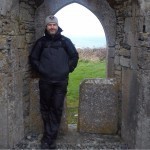 John Valters Paintner, MTS studied education and earned a teaching certificate in his home state of California. John later went on to earn a Masters in Theological Studies at the Jesuit School of Theology in Berkeley. After working in parish ministry for several years, John returned to the classroom, teaching high school religion for twelve years. After a sabbatical year abroad, John now works as Prior of the Abbey of the Arts alongside his wife of twenty years, Abbess Christine.
John Valters Paintner, MTS studied education and earned a teaching certificate in his home state of California. John later went on to earn a Masters in Theological Studies at the Jesuit School of Theology in Berkeley. After working in parish ministry for several years, John returned to the classroom, teaching high school religion for twelve years. After a sabbatical year abroad, John now works as Prior of the Abbey of the Arts alongside his wife of twenty years, Abbess Christine.
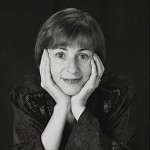 Betsey Beckman, MM is nationally acclaimed as a spirited dancer, storyteller, teacher of SpiritPlay and dancing Spiritual Director. With her extensive repertory of sacred storydances, she is regularly featured as artist/presenter at national conventions as well as local churches. She earned her Masters in Ministry degree from Seattle University, her certificate in Movement Therapy from the Institute for Transformational Movement, and is a certified InterPlay leader. As dancer, choreographer, author, mother, wife, teacher and spiritual director, she is passionate about living life fully and fostering creativity in all those with whom she shares life and ministry. Betsey’s publications include books (she is co-author of Awakening the Creative Spirit: Bringing the Expressive Arts to Spiritual Direction), recordings, and The Dancing Word series of DVDs on embodied prayer. She offers the gift of playful improvisation whenever possible. Visit Betsey's website here>>
Betsey Beckman, MM is nationally acclaimed as a spirited dancer, storyteller, teacher of SpiritPlay and dancing Spiritual Director. With her extensive repertory of sacred storydances, she is regularly featured as artist/presenter at national conventions as well as local churches. She earned her Masters in Ministry degree from Seattle University, her certificate in Movement Therapy from the Institute for Transformational Movement, and is a certified InterPlay leader. As dancer, choreographer, author, mother, wife, teacher and spiritual director, she is passionate about living life fully and fostering creativity in all those with whom she shares life and ministry. Betsey’s publications include books (she is co-author of Awakening the Creative Spirit: Bringing the Expressive Arts to Spiritual Direction), recordings, and The Dancing Word series of DVDs on embodied prayer. She offers the gift of playful improvisation whenever possible. Visit Betsey's website here>>
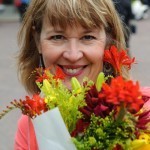 Kayce Stevens Hughlett, MA LMHC is a soulful and spirited woman. In her roles as ponderer extraordinaire, spiritual director, life muse, author, creative coach, and speaker, she invites us to playfully and fearlessly cross the thresholds toward authentic living. A strong proponent of compassionate care in the world, Kayce's live and online work focuses on the principle that we must live it to give it.
Kayce Stevens Hughlett, MA LMHC is a soulful and spirited woman. In her roles as ponderer extraordinaire, spiritual director, life muse, author, creative coach, and speaker, she invites us to playfully and fearlessly cross the thresholds toward authentic living. A strong proponent of compassionate care in the world, Kayce's live and online work focuses on the principle that we must live it to give it.
Kayce holds a Masters in Counseling Psychology with additional emphasis in spiritual direction and experiential learning practices and is a Certified Martha Beck Life Coach. She is the author of As I Lay Pondering: Daily Invitations to Live a Transformed Life and the co-author of “Arts Centered Supervision” published in Awakening the Creative Spirit: Bringing the Expressive Arts to Spiritual Direction. Kayce is a trained SoulCollage® facilitator, a founding member of the Soul Care Institute, and has worked with groups and individuals for more than 30 years in a variety of settings.
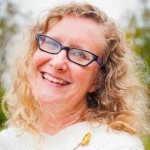 Herbalist (BS, MBA) Tonja Reichley spends her time in the urban alleyways of Denver and on the windswept coast of western Ireland foraging for wild herbs to nourish, heal and revitalize the whole self. She loves the power and connection of ritual and ancient Celtic monastic traditions. She created MoonDance Botanicals, a herbal boutique where all products are handcrafted by a collaborative herbal community and is the author of The Way of Brighid Oracle Cards, a 33-card deck dedicated to Irish goddess and saint, Brighid offering reflections, meditations and affirmations.. Her new book The Holy Wildness: Awakening to Ancient Rhythms of Sacred Irish Landscape explores how the turas, the holy journey, offers thresholds to sensual secrets, deep yearnings and spiraled awakenings. Visit her website atwww.dancingwiththewild.com .
Herbalist (BS, MBA) Tonja Reichley spends her time in the urban alleyways of Denver and on the windswept coast of western Ireland foraging for wild herbs to nourish, heal and revitalize the whole self. She loves the power and connection of ritual and ancient Celtic monastic traditions. She created MoonDance Botanicals, a herbal boutique where all products are handcrafted by a collaborative herbal community and is the author of The Way of Brighid Oracle Cards, a 33-card deck dedicated to Irish goddess and saint, Brighid offering reflections, meditations and affirmations.. Her new book The Holy Wildness: Awakening to Ancient Rhythms of Sacred Irish Landscape explores how the turas, the holy journey, offers thresholds to sensual secrets, deep yearnings and spiraled awakenings. Visit her website atwww.dancingwiththewild.com .
Songs included by Richard Bruxvoort Colligan, Laura and David Ash, Carmel Boyle, and Betsey Beckman.
December 27, 2014
Invitation to Dance: Thomas Merton on Silence
We continue our theme this month of "Silence" which arose from our Community Lectio Divina practice with the quote from Thomas Merton and continued with this month's Photo Party and Poetry Party.
I invite you into a movement practice. Allow yourself just 5 minutes this day to pause and listen and savor what arises.
Begin with a full minute of slow and deep breathing. Let your breath bring your awareness down into your body. When thoughts come up, just let them go and return to your breath. Hold this image of "Silence" as the gentlest of intentions, planting a seed as you prepare to step into the dance.
Play the piece of music below ("Silence" by Lizz Wright — Please visit this site to purchase the album.) let your body move in response, without needing to guide the movements. Listen to how your body wants to move through space in response to your breath. Remember that this is a prayer, an act of deep listening. Pause at any time and rest in stillness again.
After the music has finished, sit for another minute in silence, connecting again to your breath. Just notice your energy and any images rising up.
Is there a word or image that could express what you encountered in this time? (You can share about your experience, or even just a single word in the comments section below or join our Holy Disorder of Dancing Monks Facebook group and post there.)
If you have time, spend another five minutes journaling in a free-writing form, just to give some space for what you are discovering.
To extend this practice, sit longer in the silence before and after and feel free to play the song through a second time. Often repetition brings a new depth.







